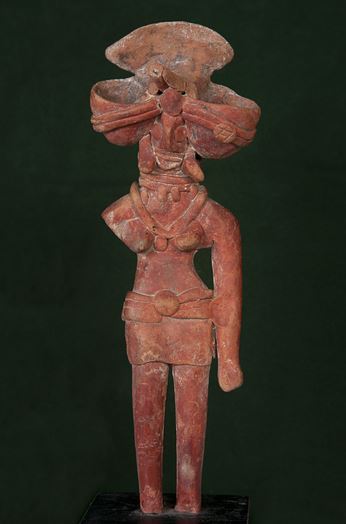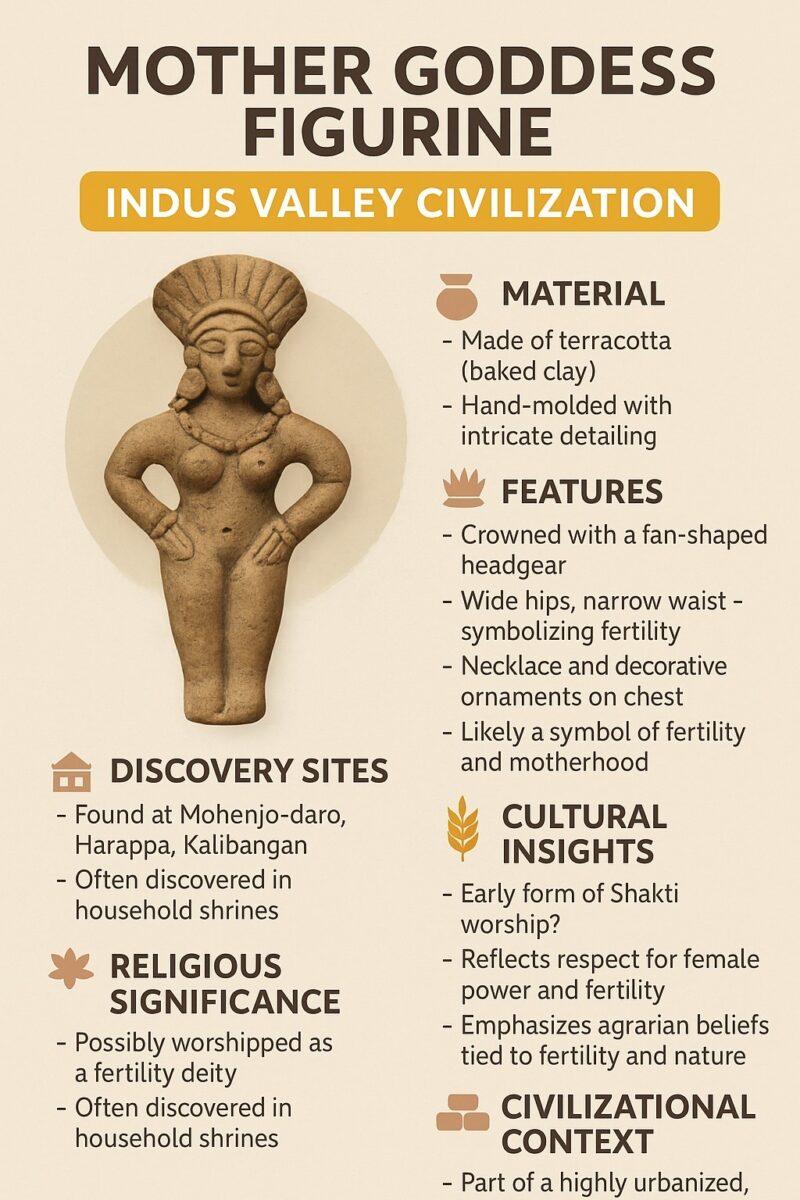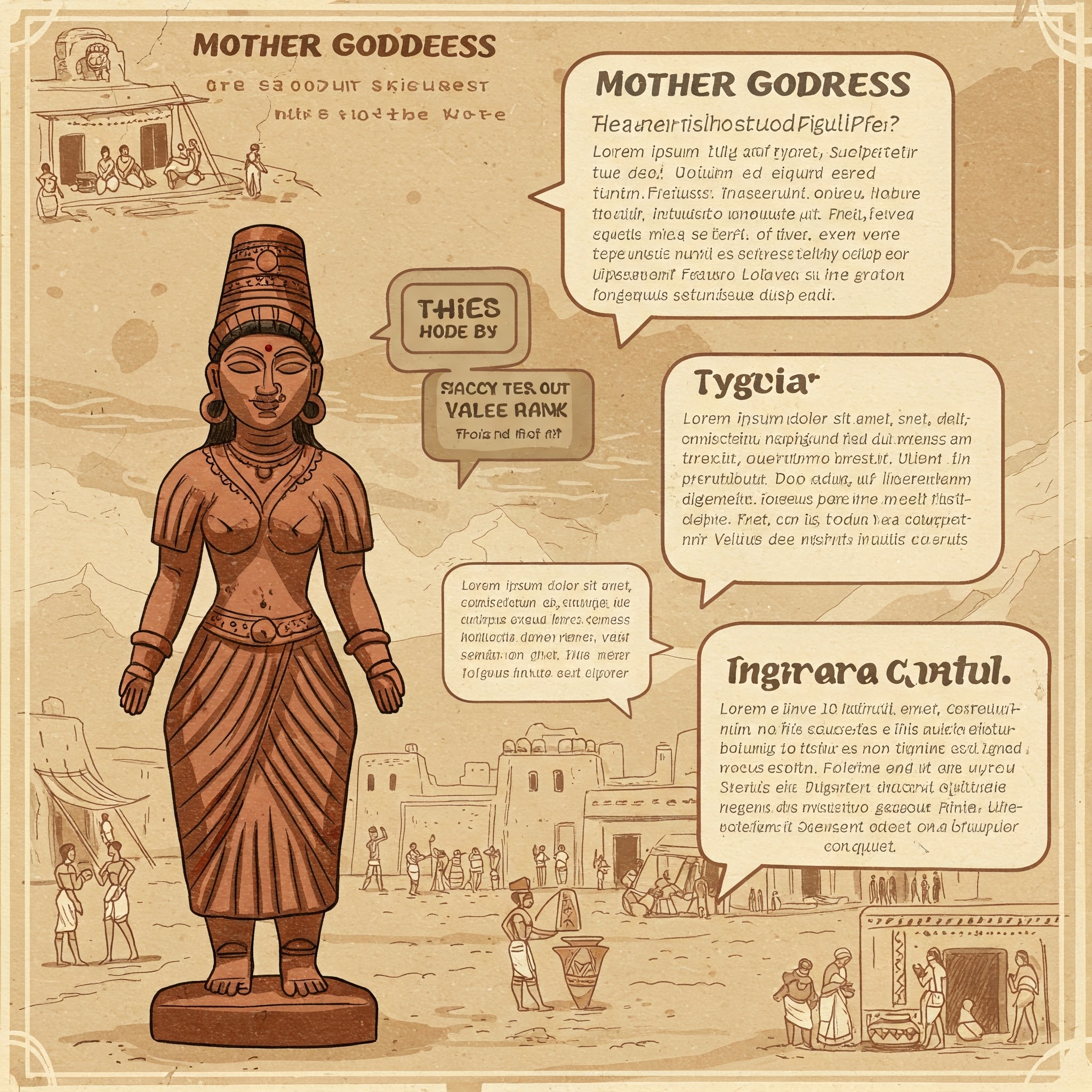Mother goddess terracotta Indus Valley civilisation
It is one most exciting sculptures found from the Indus Valley Civilisation. This is titled Mother Goddess, it symbolises fertility.
It is made up of terracotta, it is made by hand, and dates back to 2500 BCE, and its origin is Mohenjo-Daro, Pakistan.
Its dimensions are 22 cm Height, 8.5 cm width, and 3.4 cm depth, and it is displayed in the National Museum, Delhi.
The Divine Feminine of the Indus Valley Civilisation
The Indus Valley Civilisation (c. 3300–1300 BCE) is one of the world’s oldest urban cultures, known for its advanced city planning, trade networks, and unique artistic expressions. Among its many fascinating artefacts, the terracotta figurines of the Mother Goddess stand out as powerful symbols of spirituality, fertility, and feminine divinity.

Discovery of the Mother Goddess Figurines
Archaeologists have unearthed numerous terracotta figurines across major Indus sites like Mohenjo-Daro, Harappa, and Mehrgarh. These small, handcrafted statues depict a female deity with exaggerated features—wide hips, prominent breasts, and ornate headdresses—suggesting a connection to fertility and nature worship.
Features of the Mother Goddess Terracotta
- Exaggerated Feminine Attributes – The figurines emphasise fertility symbols, possibly representing a goddess associated with creation and abundance.
- Ornate Headdresses & Jewellery – Many figures wear elaborate headdresses, necklaces, and waistbands, indicating high status or divinity.
- Handmade from Terracotta – These figurines were moulded from baked clay, showcasing the craftsmanship of Indus artisans.
- Possible Ritual Use – Some scholars believe they were used in household shrines or community worship.
Significance of the Mother Goddess in Indus Culture
The prominence of these figurines suggests that the Indus people revered a mother goddess, a common theme in ancient agrarian societies. Similar deities appear in later Hindu traditions (like Shakti or Devi), indicating possible cultural continuity.
Theories About Her Role
- Fertility & Harvest – She may have been invoked for good crops and healthy offspring.
- Protective Deity – Some believe she guarded homes and families.
- Precursor to Later Goddesses – Parallels exist with the Mesopotamian Inanna and the Hindu Mother Goddess traditions.

Debates & Interpretations
While many scholars associate these figurines with a mother goddess, some argue they could represent:
- Priestesses or Noble Women
- Symbols of Domestic Worship
- Toys or Decorative Items
However, the sheer number of such figurines found across different sites strengthens the theory of a widely worshipped female deity.
Legacy of the Mother Goddess
The Indus Valley’s terracotta goddess figurines provide a glimpse into the spiritual life of one of history’s earliest civilisations. They reflect a deep reverence for the feminine principle, linking ancient traditions with later religious developments in South Asia.
Why Does She Matter Today?
- Cultural Heritage – She connects modern South Asia to its ancient roots.
- Feminine Divinity – Highlights the importance of goddess worship in early societies.
- Artistic Marvel – Demonstrates the skill and creativity of Indus Valley artisans.
Conclusion
The Mother Goddess terracotta figurines of the Indus Valley remain an enduring mystery, offering insights into the beliefs and values of a civilisation that thrived thousands of years ago. Whether as a symbol of fertility, protection, or divine power, she remains a testament to the timeless reverence for the sacred feminine.
